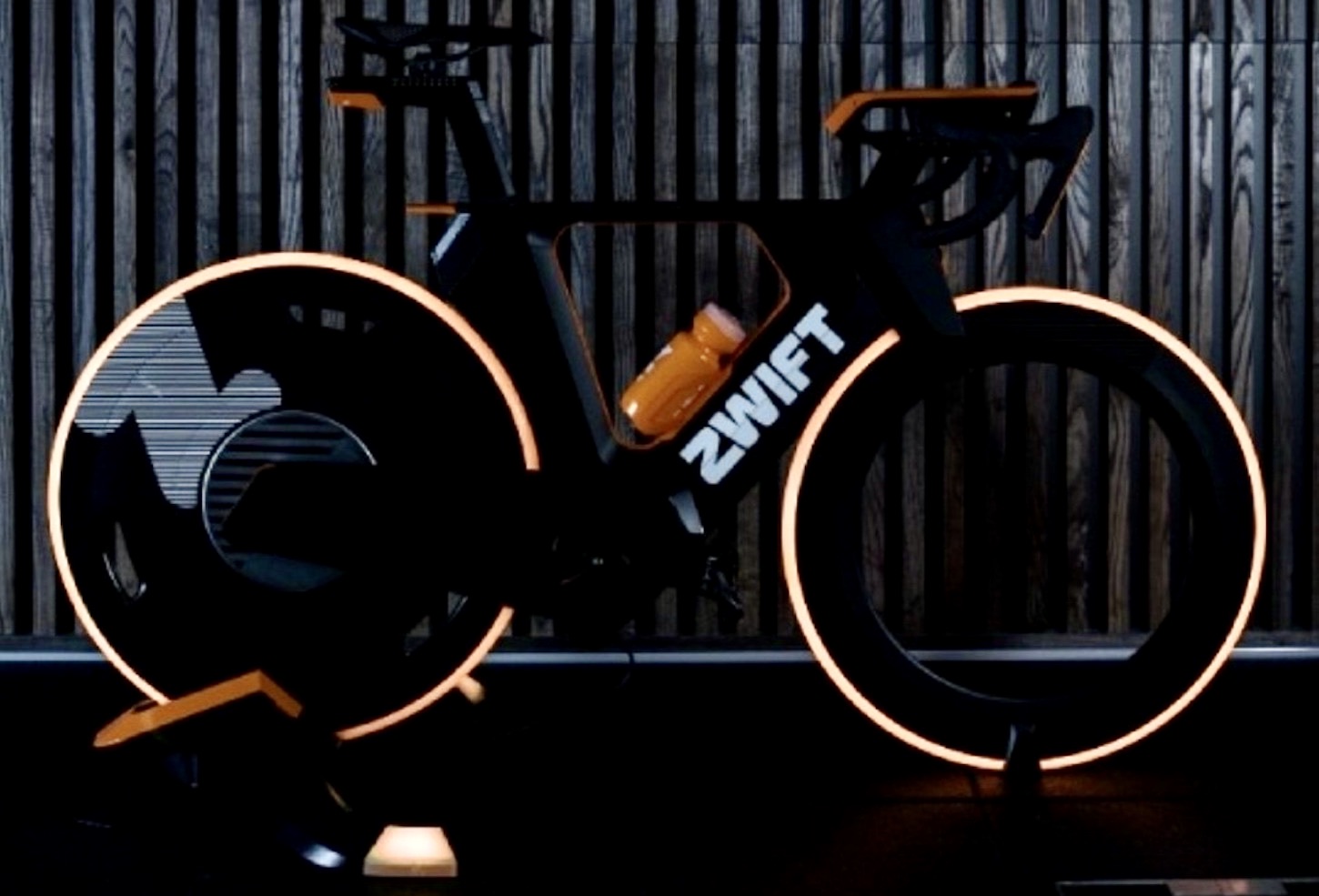

After thoroughly vetting enthusiasts, Zwift is considering entering the smart trainer segment, teasing enthusiasts with a glance of its latest concept trainers called the Ride and the Wheel, which are designed to work in conjunction with its extensive series of virtual training programs.
According to Zwift, the Wheel is a direct-drive trainer, with a metal flywheel, while the Ride is simply the Wheel with a smartbike frame and front wheel added. So the Wheel can actually be upgraded to a full Ride setup.
Zwift CEO Eric Min explains, “following the results of our survey, we decided it was worth the risk of leaking the details of our hardware in exchange for the learnings we’ll get from the surveys.”
While both trainers are still in the development phase, Zwift has provided some key specs and features that may be incorporated into the Wheel and Ride such as:
- Power Accuracy: +/-1%:
- Peak Power: 2200W:
- Max Simulated Incline of 25%: this can be measured in a variety of ways (no industry standard), but is in the same ballpark as the NEO and KICKR
- Downhill Simulation: aka “downhill drive”, where a motor drives the flywheel on descents so you can coast and get the feel of descending.
- Road surface simulation
- Braking, Steering, and Game Controls
- Virtual Gear Shifting (Z Cog)
- Immersive Lighting: LED lights around the wheel(s)
Additional specs only applicable to the Ride:
- Minimum user height of 5′ (152cm), maximum height of 6′ 4″ (193cm)
- Dimensions: 5′ 5″ x 2′ 4″ (165x71cm)
- Vertically storable
- Adjustability: handlebar position, seat position, and crank length are all adjustable
Unique Selling Points
Z Cog (Virtual Gear Shifting)
The Zwift Wheel description includes the following: “the Wheel is built around a single cog design with virtual shifting, unlocking compatibility with all bikes from the box.”
This suggests the Wheel might be developed around virtual shifting, eliminating the need for a front or rear derailleur, instead allowing the trainer to adjust resistance according to power output.
While virtual shifting is already being utilized in smart bikes, Zwift’s technology purports to allow users to set-up a virtual groupset that can simulate both 1x and 2x drivetrains via an integrated controller.
According to Zwift, by adding on said controller, users who opt for the Wheel can bring their own frame (and groupset) to the game. This will be especially helpful for MTB and gravel riders who find they run out of real gears on Zwift, where road gearing is really the ideal setup.
However, it would also be handy for users of bikes that are older or poorly constructed. These users often struggle to get their bike to work with a “normal” cassette on a direct-drive trainer, but the Z Cog would eliminate that hassle, as well as the hassles of adjusting one’s shifting so it’s consistent and smooth.
Upgradeability
Zwift has cleverly designed its new trainers with a path to upgrading, allowing users to begin with just the Wheel, then add the Ride’s frame and front wheel to the mix later.
Immersive Lighting
According to Zwift, the trainer’s lights “bring the Zwift world into your home”, with images showing the lights in an orange color, while also suggesting the lights can change based on one or more parameters such as wattage, or changing to mimic the environment of the training program.
Portability/Storability
Although the Wheel may seem quite large, it appears it includes handholds, while the full bike frame can be rotated vertically for storage.
Add-Ons
This is speculation, but over time the add-ons may include an integrated screen option (with the hardware to run Zwift) and perhaps even a gradient simulator like the Wahoo CLIMB or Elite RIZER.
Conclusions
If Zwift is able to bring the Wheel and the Ride to market at competitive price points over the next year, dedicated indoor cyclists will really have something to rejoice about.
However, Chris Snook, Zwift’s PR Director, points out, “the survey is designed to help us better understand the hardware product features by showing a mix of real and hypothetical products and features. These are shown at various hypothetical prices.”
So, while the specs look good, the final product may be very different.
Zwift Wheel Specs:
- Hypothetical pricing: $1,214 / £900
- Max power: of 2,200w
- Accuracy: +/- 1%
- Controls: Wireless game controller for your bike’s handlebars for steering, braking, and other game controls, most likely virtual shifting under Z Cog
- Gradient and terrain: 25% simulation, road surface texturing à la Tacx Neo 2T
- Features: Downhill acceleration, Z Cog, upgradeable to full Zwift Ride bike
Zwift Ride Specs:
- Hypothetical pricing: $2,294 / £1,700
- Max power: 2,200w
- Accuracy: +/- 1%
- Controls: Wireless game controller for your bike’s handlebars for steering, braking, and other game controls
- Features: Immersive lighting, comprehensive adjustability to fit riders between 5ft and 6ft 6in, vertical storage




